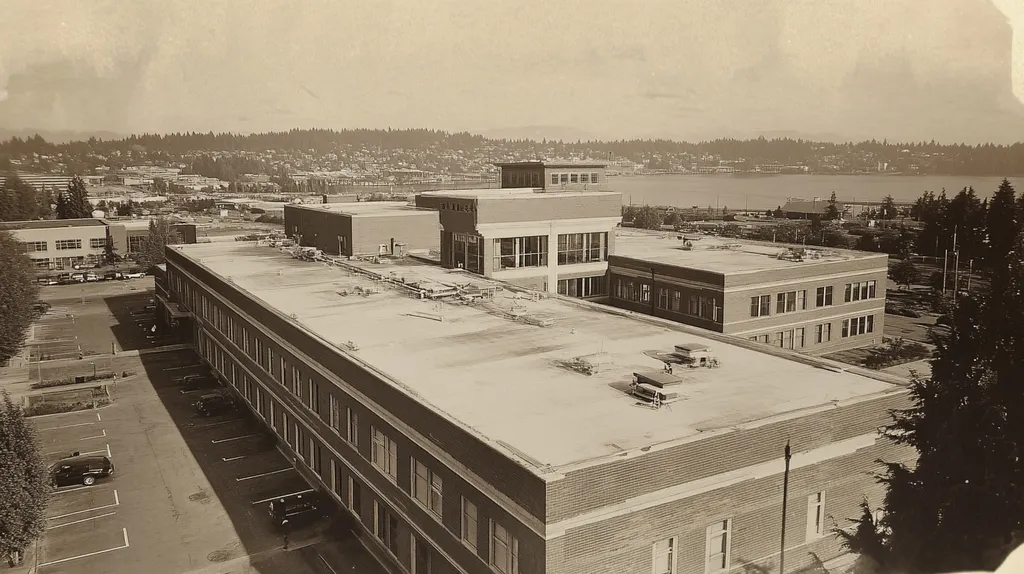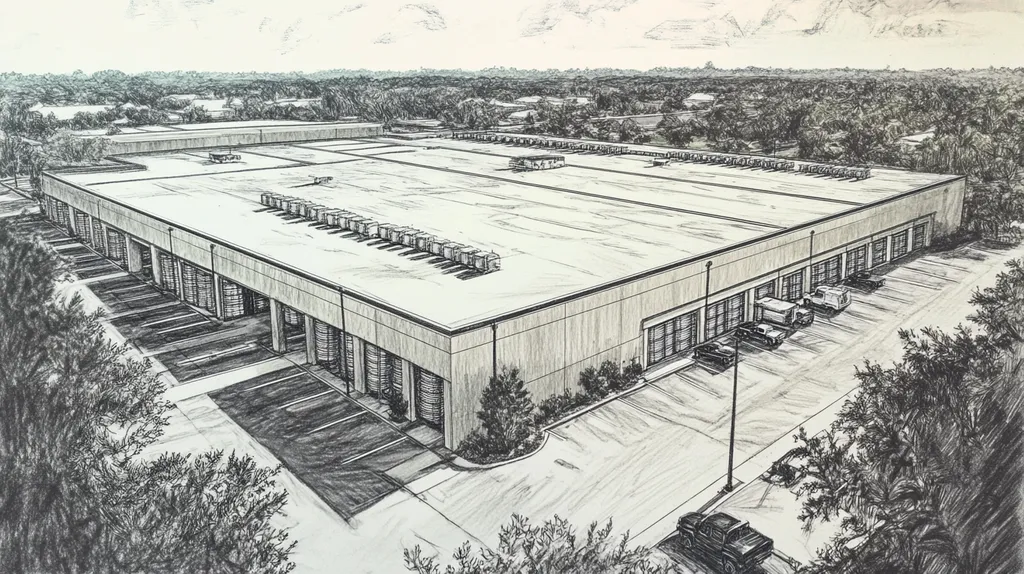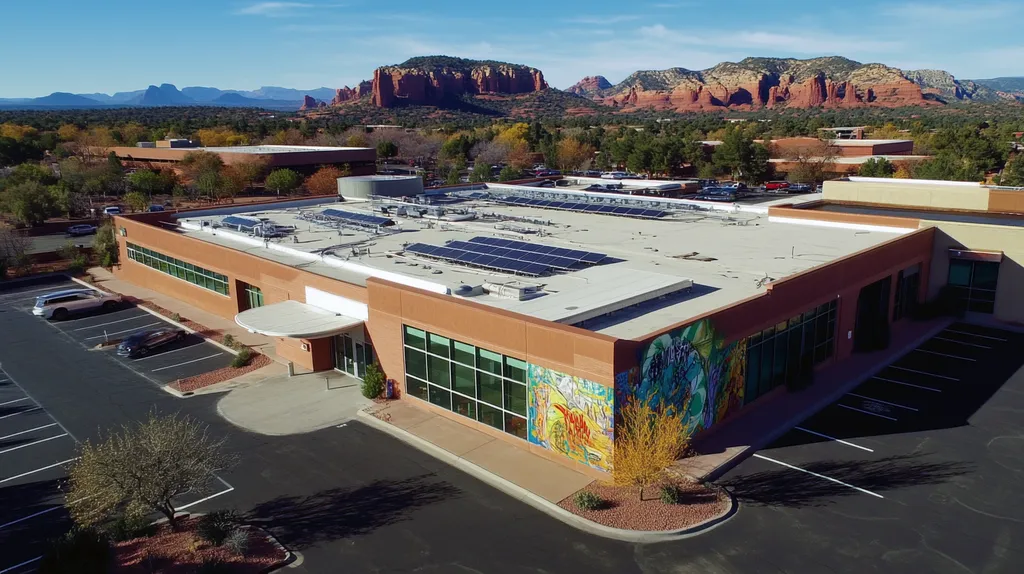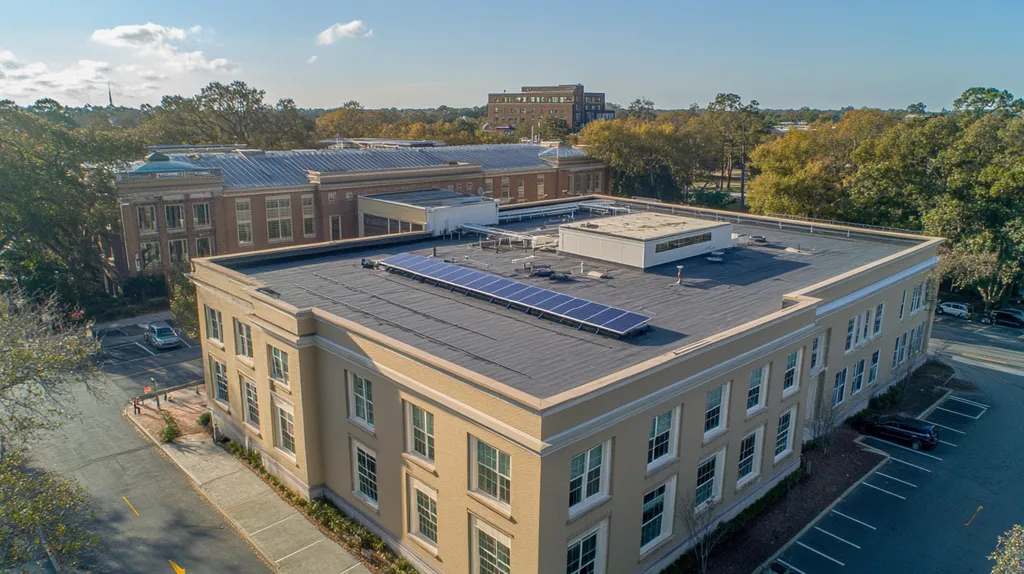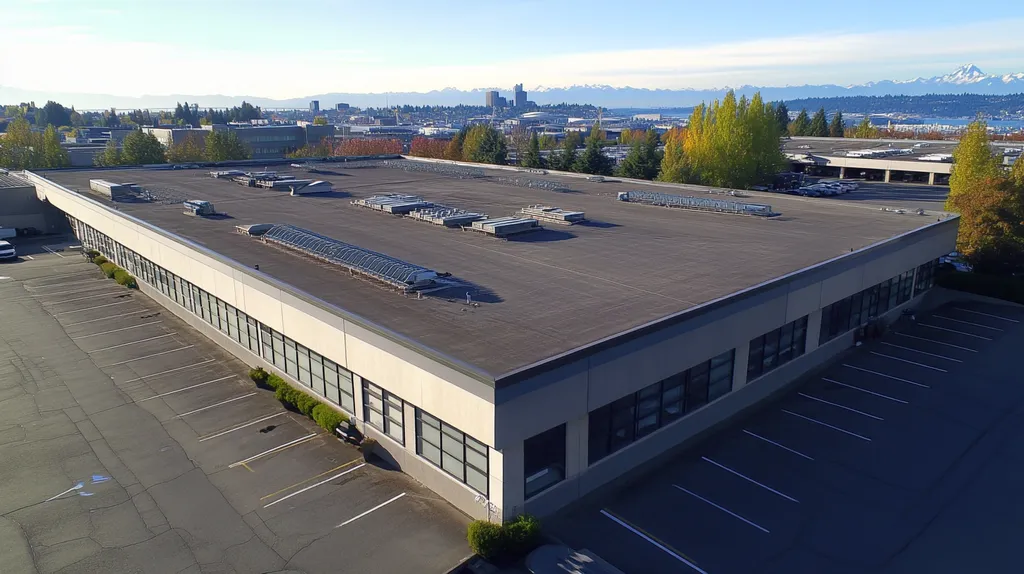Welcome to today’s Battle Royale featuring two roofing heavyweights: “Reflective Coatings” in the east corner versus “Elastomeric Coatings” in the west!
Tonight’s showdown pits these contenders against each other across six punishing rounds designed to test every aspect of their performance for Environmental Impact.
At stake? Millions in potential costs, decades of building protection, and the critical performance demands of modern commercial and industrial facilities.
Our professional judging panel will evaluate each round on technical merit, real-world performance, and value delivery. After all six rounds, we’ll declare our ultimate champion.
Ladies and gentlemen, facility managers and building owners… it’s time to rumble!
ROUND 1: INITIAL COSTS & INSTALLATION
As commercial building owners face mounting pressure to reduce energy costs and environmental impact, the choice between reflective and elastomeric coatings becomes increasingly critical. With energy costs continuing to rise and stricter environmental regulations on the horizon, selecting the right coating can mean the difference between significant savings and costly mistakes. Understanding the initial investment and installation requirements of each option is essential for making an informed decision.
Material Expenses
Material costs represent a significant portion of any commercial roofing project’s budget. Cool roof coatings can reduce cooling energy costs by up to 40%, offering substantial operational savings despite higher initial material costs. (source: Gaco)
Reflective coatings typically command premium pricing due to their specialized reflective compounds and advanced technology. However, these materials often come with extended warranties and proven performance records that justify their cost.
Elastomeric coatings generally cost less per square foot and require fewer supplementary materials during installation. While they provide excellent waterproofing properties, they may need more frequent reapplication over time.
Given their substantial energy-saving potential and longer lifespan, reflective coatings earn an “ADVANTAGE” in material expenses despite higher upfront costs.
Installation Complexity
The complexity of installation directly impacts labor costs and project success rates. Reflective coatings demand precise surface preparation and specific environmental conditions during application to achieve optimal reflectivity.
These coatings require specialized equipment and highly trained crews to ensure proper mil thickness and coverage. Additional time must be allocated for measuring and maintaining consistent application rates.
Elastomeric coatings offer more forgiving application parameters and can be installed using standard roofing equipment. Their flexible nature allows for easier application over various substrate conditions and existing roofing materials.
Due to their simpler application process and lower skill requirements, elastomeric coatings claim an “ADVANTAGE” in installation complexity.
Project Timeline
Project duration affects both direct costs and business disruption. Reflective coating installations typically require additional preparation time and specific weather conditions, which can extend project timelines.
Multiple coating layers must be applied with proper curing time between applications, potentially stretching projects over several days or weeks. Weather delays can significantly impact completion schedules.
Elastomeric coatings can often be applied in a single day, with fewer weather restrictions and shorter curing times. Their quick installation minimizes business disruption and reduces labor costs.
The ability to complete projects more quickly and with fewer weather-related delays gives elastomeric coatings the “ADVANTAGE” in project timeline considerations.
ROUND 1 WINNER: ELASTOMERIC COATINGS
ROUND 2: DURABILITY & LIFESPAN
Commercial building owners face mounting pressure to maximize roof longevity while minimizing environmental impact. With severe weather events increasing and building codes becoming more stringent, the durability of roofing systems directly affects both operational costs and sustainability goals.
Understanding how different coating options perform over time has become crucial for property managers seeking to balance immediate needs with long-term environmental responsibility.
Weather Resistance
UV radiation, thermal cycling, and precipitation pose significant threats to roof coating performance. These environmental factors can accelerate degradation, leading to coating failure and increased maintenance requirements.
Reflective coatings excel at UV resistance and heat deflection, maintaining their protective properties even under intense sun exposure. Their specialized formulation helps prevent thermal-induced stress and cracking in the underlying roof structure.
Elastomeric coatings provide superior resistance to water penetration and can withstand repeated freeze-thaw cycles. Their flexible nature allows them to expand and contract without compromising their protective barrier.
Given their balanced performance against multiple weather threats, both coating types earn a “TIE” in weather resistance.
Physical Durability
Daily exposure to foot traffic, equipment maintenance, and physical impacts tests coating resilience. The ability to maintain integrity under these conditions directly affects service life and replacement frequency.
Reflective coatings typically offer good resistance to physical wear but may show visible scuffing that can reduce their reflective properties. Impact damage can compromise their protective capabilities more readily than flexible alternatives.
Elastomeric coatings demonstrate superior resistance to physical stress due to their rubber-like properties. Their ability to absorb impact and maintain membrane integrity gives them a clear advantage in physical durability.
Based on superior impact resistance and flexibility, elastomeric coatings earn the “ADVANTAGE” in physical durability.
Long-Term Performance
Solar-reflective roofs can reduce cooling energy demand by 10-40%, making coating longevity a critical factor in sustained environmental benefits. The longer a coating maintains its protective properties, the greater its positive environmental impact. (source: Gaco)
Reflective coatings typically require reapplication every 7-10 years to maintain optimal performance. Their reflective properties gradually diminish over time, reducing energy-saving benefits.
Elastomeric coatings can last 10-15 years before requiring replacement when properly maintained. Their consistent performance throughout their service life provides reliable protection with fewer reapplication cycles.
With longer service life and more stable performance, elastomeric coatings claim the “ADVANTAGE” in long-term performance.
ROUND 2 WINNER: Elastomeric Coatings
ROUND 3: PERFORMANCE FACTORS
As climate change intensifies and energy costs soar, the performance of commercial roof coatings has become increasingly critical for both environmental impact and operational costs. The right coating choice can dramatically reduce a building’s carbon footprint while providing substantial energy savings.
Cool roofs reduce heat transfer and mitigate urban heat island effects, with proper coating selection reducing peak cooling demand by 11-27%. Understanding these performance factors is essential for making environmentally responsible roofing decisions. (source: US Environmental Protection Agency)
Thermal Performance
Heat management capabilities directly impact both energy consumption and environmental footprint. Reflective coatings excel at redirecting solar radiation, reducing roof surface temperatures by up to 50-60°F during peak summer conditions.
These coatings maintain their reflective properties effectively, providing consistent thermal performance throughout their lifespan. Their ability to reduce cooling loads makes them particularly valuable in warmer climates.
Elastomeric coatings provide insulation through their thickness and composition, but don’t match the heat-reflecting capabilities of their reflective counterparts. While they offer good thermal protection, their primary strength lies in weatherproofing rather than heat management.
Given their superior solar reflection and heat reduction properties, reflective coatings earn the “ADVANTAGE” in thermal performance.
Weather Adaptability
Regional climate variations demand different performance characteristics from roof coatings. Reflective coatings perform exceptionally well in hot, sunny conditions but may show reduced effectiveness in cloudy or rainy environments.
These coatings can become less effective when dirty or weathered, requiring regular maintenance to maintain optimal performance. Their rigid structure may also limit their ability to handle extreme temperature fluctuations.
Elastomeric coatings demonstrate superior flexibility across all weather conditions. Their ability to expand and contract with temperature changes while maintaining waterproof integrity makes them more versatile across different climate zones.
For their consistent performance across varied weather conditions, elastomeric coatings claim the “ADVANTAGE” in weather adaptability.
Sustainability Impact
Long-term environmental impact depends on both energy efficiency and material longevity. Reflective coatings significantly reduce cooling energy requirements, directly decreasing greenhouse gas emissions from building operations.
However, these coatings may require more frequent reapplication to maintain optimal reflectivity. This increased maintenance cycle can result in additional material consumption and disposal over time.
Elastomeric coatings typically last longer between replacements and maintain consistent performance throughout their lifespan. Their durability reduces the environmental impact of manufacturing and disposal cycles.
The balance between immediate energy savings and long-term material conservation results in a “TIE” for sustainability impact.
ROUND 3 WINNER: REFLECTIVE COATINGS
ROUND 4: MAINTENANCE REQUIREMENTS
As commercial buildings face increasing pressure to reduce their environmental footprint, proper maintenance of roof coatings becomes critical for long-term sustainability. The Environmental Protection Agency reports that cool roofs can reduce peak cooling demand by 11-27%, but these benefits depend heavily on maintaining coating performance over time. (source: U.S. EPA)
Poor maintenance practices not only compromise energy efficiency but can lead to premature coating failure, increasing waste and environmental impact. Understanding the maintenance requirements of different coating systems helps facility managers optimize both performance and sustainability.
Cleaning Requirements
Surface cleanliness directly impacts coating performance and longevity. Reflective coatings require regular cleaning to maintain their solar reflectance properties, typically needing professional cleaning every 6-12 months.
Dirt, debris, and atmospheric pollutants can significantly reduce reflective properties, diminishing energy-saving benefits. However, cleaning procedures are straightforward and can be incorporated into routine maintenance schedules.
Elastomeric coatings show better resistance to dirt accumulation and maintain their core waterproofing properties even when surface contamination occurs. Their performance is less dependent on frequent cleaning interventions.
With lower cleaning frequency requirements and more stable performance under normal soiling conditions, elastomeric coatings earn the “ADVANTAGE” in cleaning requirements.
Inspection Frequency
Regular inspections are crucial for identifying potential issues before they compromise coating integrity. Reflective coatings require quarterly inspections to check for physical damage and assess reflective performance.
These inspections must include specialized reflectivity measurements to ensure energy-saving properties remain within acceptable ranges. Early detection of deterioration allows for targeted repairs rather than complete recoating.
Elastomeric coatings typically need only semi-annual inspections focused primarily on checking for physical damage or separation at seams. Their flexible nature makes them more forgiving of minor surface imperfections.
Due to less frequent inspection requirements and simpler evaluation criteria, elastomeric coatings claim the “ADVANTAGE” in inspection frequency.
Repair Complexity
The ease and effectiveness of repairs significantly impact long-term maintenance costs. Reflective coating repairs must carefully match existing material properties to maintain consistent solar reflectance across the roof surface.
While repairs are generally straightforward, they require specific products and application techniques to ensure proper integration with existing coatings. Small repairs can often be completed quickly with minimal disruption.
Elastomeric coating repairs tend to be more complex due to the need to maintain flexible properties and ensure proper adhesion. Patches must be carefully blended to prevent water infiltration at repair boundaries.
Given their simpler repair requirements and better patch integration, reflective coatings earn the “ADVANTAGE” in repair complexity.
ROUND 4 WINNER: TIE
ROUND 5: SUSTAINABILITY CREDENTIALS
The commercial building sector accounts for nearly 40% of global energy consumption and carbon emissions. As climate change accelerates and environmental regulations tighten, choosing the right roof coating has become a critical decision for property owners seeking to reduce their environmental impact.
With mounting pressure to achieve net-zero emissions targets, facility managers must carefully evaluate how different coating options align with their sustainability goals while delivering measurable environmental benefits.
Environmental Impact
The production and application of roofing materials significantly affects their overall environmental footprint. Reflective coatings typically contain fewer volatile organic compounds (VOCs) and utilize more environmentally friendly raw materials in their manufacture.
These coatings deliver substantial environmental benefits through their operational performance, reducing heat island effects and lowering building cooling requirements. Their ability to reflect solar radiation directly reduces carbon emissions from HVAC systems.
Elastomeric coatings often contain petroleum-based compounds that carry a heavier environmental burden during production. While they provide excellent waterproofing, their thermal performance doesn’t match the environmental benefits of reflective alternatives.
Based on their lower production impact and superior operational benefits, reflective coatings earn the “ADVANTAGE” in environmental impact.
Material Lifecycle
The longevity and disposal of coating materials play crucial roles in their sustainability profile. Reflective coatings typically maintain their performance characteristics for 7-10 years before requiring reapplication, with many components being recyclable at end-of-life.
Modern reflective coating formulations increasingly incorporate recycled content and bio-based materials, reducing their environmental impact. Their consistent performance throughout their service life maximizes the return on embedded carbon.
Elastomeric coatings generally last 10-15 years but present greater challenges for recycling due to their chemical composition. Their disposal often requires specialized handling, increasing their end-of-life environmental impact.
Given their recyclability and use of sustainable materials, reflective coatings claim the “ADVANTAGE” in material lifecycle.
Energy Performance
Cool roofs reduce heat transfer and lower indoor temperatures, creating significant energy savings and environmental benefits. The U.S. Environmental Protection Agency notes that these systems decrease energy use while reducing air pollution and greenhouse gas emissions, ultimately improving community health outcomes. (source: U.S. Environmental Protection Agency)
Reflective coatings maximize these benefits through their superior solar reflectance properties. Their performance directly reduces cooling loads and associated carbon emissions throughout their service life.
While elastomeric coatings provide some insulation value, they cannot match the energy-saving potential of reflective alternatives. Their primary focus on waterproofing limits their contribution to building energy efficiency.
Due to their superior energy-saving capabilities and resulting emissions reductions, reflective coatings secure the “ADVANTAGE” in energy performance.
ROUND 5 WINNER: REFLECTIVE COATINGS
ROUND 6: SPECIALIZED APPLICATIONS
The growing complexity of modern commercial buildings demands specialized roofing solutions that balance environmental impact with performance. As cities expand and climate patterns shift, property owners face mounting pressure to select coatings that work effectively across diverse applications while minimizing ecological damage.
According to the Roof Coatings Manufacturers Association, reflective coatings can reduce roof temperatures by up to 55°F compared to traditional roofs, making coating selection critical for specialized environments. (source: Roof Coatings Manufacturers Association)
High-Traffic Applications
Commercial roofs often serve as platforms for HVAC equipment, solar installations, and maintenance activities. These high-traffic areas require coatings that maintain their protective properties despite constant wear.
Reflective coatings show vulnerability to scuffing and physical damage in high-traffic zones. While they maintain good adhesion, their reflective properties can degrade with repeated foot traffic and equipment movement.
Elastomeric coatings demonstrate superior resistance to physical stress through their flexible composition. Their ability to withstand compression and return to shape makes them ideal for areas experiencing regular traffic.
Given their resilience under mechanical stress, elastomeric coatings earn the “ADVANTAGE” in high-traffic applications.
Equipment-Dense Zones
Modern commercial roofs must accommodate increasing amounts of mechanical equipment while maintaining environmental performance. These zones present unique challenges for coating integrity and heat management.
Reflective coatings excel at reducing heat buildup around equipment installations. Their superior thermal properties help maintain optimal operating conditions for rooftop machinery.
Elastomeric coatings provide good waterproofing around equipment mounts but offer limited thermal benefits. Their flexibility helps maintain seals around penetrations but doesn’t address heat concentration issues.
Based on their ability to manage equipment-generated heat, reflective coatings claim the “ADVANTAGE” in equipment-dense zones.
Climate-Specific Requirements
Regional weather patterns and temperature extremes demand specialized coating performance. The effectiveness of different coating types varies significantly across climate zones.
Reflective coatings deliver optimal performance in hot, sunny regions where solar reflection provides maximum benefit. However, their effectiveness diminishes in areas with limited sun exposure or frequent precipitation.
Elastomeric coatings maintain consistent performance across varying weather conditions. Their adaptability to temperature fluctuations and moisture makes them suitable for diverse climates.
Due to their versatility across different climate conditions, elastomeric coatings secure the “ADVANTAGE” in climate-specific requirements.
ROUND 6 WINNER: TIE
AND THE WINNER IS…
After six grueling rounds of technical evaluation, we have our verdict…
In this epic environmental impact showdown, REFLECTIVE COATINGS emerge victorious, claiming decisive wins in both sustainability credentials and critical performance factors! Their superior energy savings potential and lower environmental footprint proved too powerful to overcome.
The champion dominated with knockout performances in thermal management and environmental impact categories, delivering up to 40% reduction in cooling costs while maintaining a lighter carbon footprint throughout their lifecycle.
But don’t count elastomeric coatings out! Their impressive durability and weather adaptability make them the superior choice for high-traffic areas and regions with extreme temperature fluctuations. When maximum physical resilience matters more than solar reflectance, elastomeric coatings still pack a powerful punch.
IMPORTANT NOTICE: Every building presents unique challenges based on location, usage patterns, and structural characteristics. Local climate conditions, energy costs, and specific facility requirements can significantly impact coating performance. This analysis provides general guidance but cannot account for all variables. Always consult qualified roofing professionals who can evaluate your specific situation before making final decisions.
Ladies and gentlemen, in the commercial roofing arena, victory goes not just to the strongest contender, but to the solution that best matches your building’s unique environmental and performance requirements. Choose wisely – our planet is counting on you!
FREQUENTLY ASKED QUESTIONS
Q. What are the initial costs of reflective and elastomeric coatings on commercial roofs?
A. Reflective coatings typically have higher initial costs due to specialized materials, but they can yield long-term savings through energy efficiency. Conversely, elastomeric coatings are more affordable initially but may require frequent reapplications, making their overall costs comparable in the long run.
Q. How do durability and lifespan differ between commercial roof coatings?
A. Reflective coatings typically last around 7-10 years, while elastomeric coatings can last 10-15 years. This longevity, along with their ability to maintain protective properties over time, underscores the importance of selecting the right coating for long-term sustainability.
Q. Which type of coating offers better thermal performance for commercial roofs?
A. Reflective coatings excel in thermal performance by redirecting solar energy and maintaining lower roof temperatures. They significantly decrease cooling demands in warm climates, while elastomeric coatings primarily focus on weatherproofing and provide less heat reflection.
Q. What are the maintenance requirements for elastomeric vs. reflective coatings?
A. Reflective coatings require regular cleaning and inspections to maintain their reflective properties, usually every 6-12 months. In contrast, elastomeric coatings require less frequent cleaning and inspections, making them a less maintenance-intensive option for commercial roof systems.
Q. How does the environmental impact differ between reflective and elastomeric coatings?
A. Reflective coatings generally have a lower environmental impact due to their energy-saving properties and less volatile organic compound (VOC) content. Elastomeric coatings often contain petroleum-based materials, which can contribute to a higher overall environmental footprint despite their strengths in waterproofing.
Q. Which coating is more effective for specialized applications on industrial roofs?
A. Elastomeric coatings are generally more versatile for specialized applications due to their flexibility and resistance to physical stress. Reflective coatings may not perform as well in high-traffic or equipment-dense areas, making elastomeric options preferable for demanding environments.
Q. What long-term benefits do commercial roof coatings offer for environmental sustainability?
A. Both types of coatings provide long-term environmental benefits by reducing energy costs and greenhouse gas emissions. However, reflective coatings are particularly effective in cooling energy reduction, which contributes significantly to lower operational impacts and supports sustainability goals for commercial buildings.

